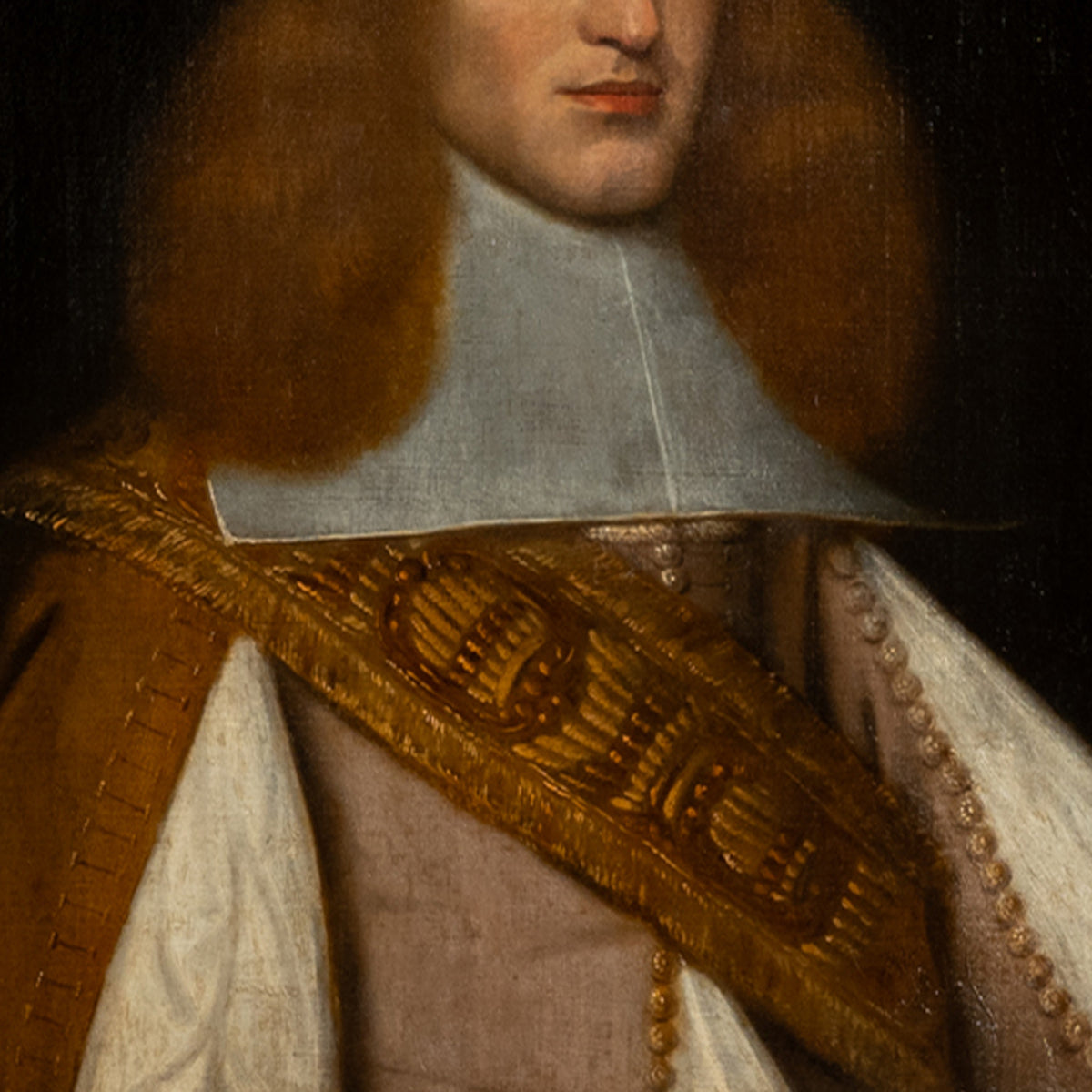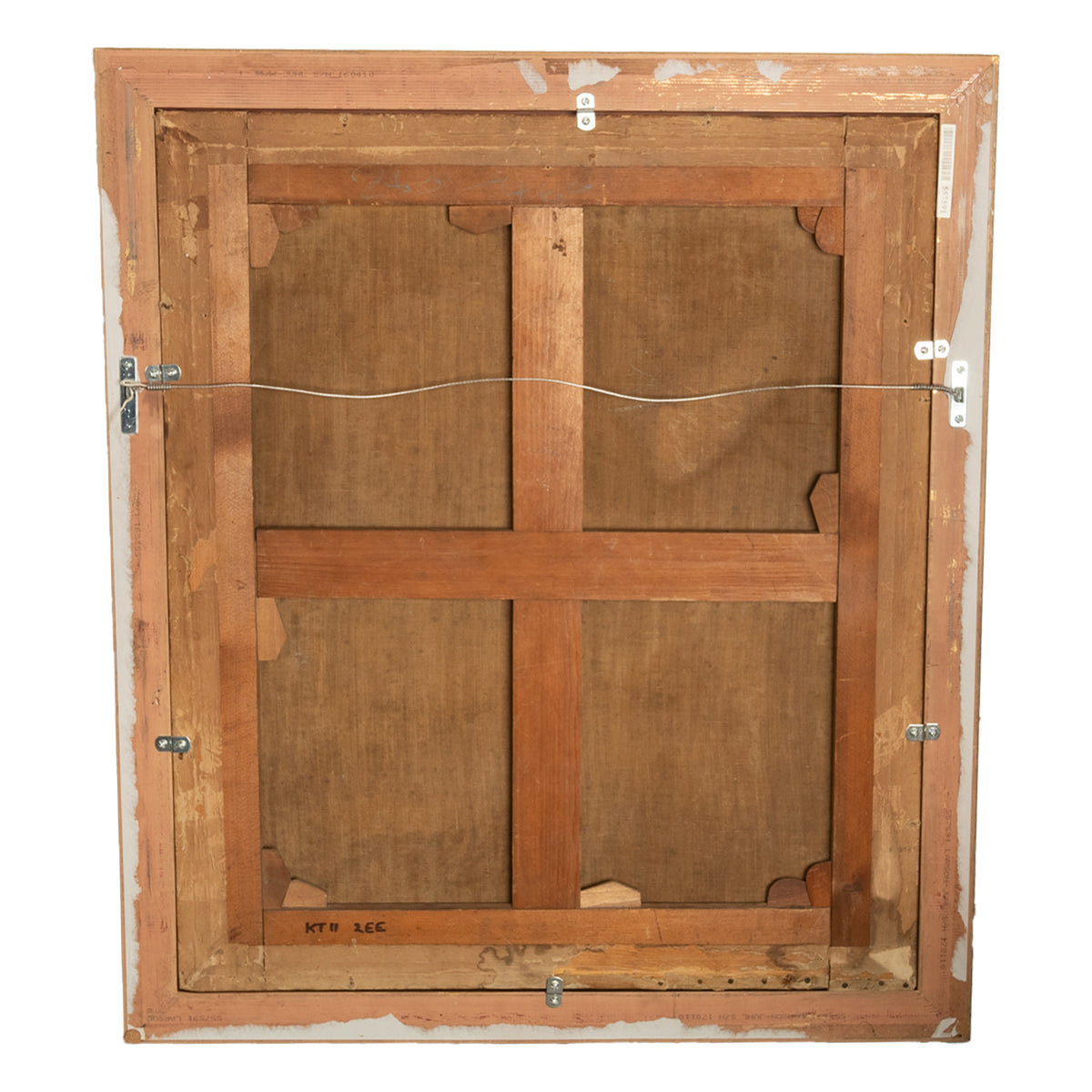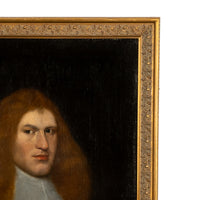Antique 17th Century Dutch Old Master Oil Canvas Painting Portrait of a Nobleman by Gerard Ter Borch circa 1650
- Regular
- $ 0
- Sale
- $ 0
- Regular
- Unit Price
- per
SOLD
Antique Dutch Old Master oil on canvas portrait painting by Gerard Ter Borch (1617-1681), portrait of a nobleman, circa 1650.
A wonderful Old Master portrait by Gerard Ter Borch, the artist many 17th century prominent artists including Vermeer. The portrait depicts a young nobleman, he wears a long lace collar and an embroidered sash.
The painting has just been professionally restored, conserved and cleaned, the painting is housed in a gilded gesso frame and is in very good condition and ready to hang on your wall.
The artist's works are shown in many of the major galleries and art museums globally.
Gerard Ter Borch (also known as Gerard Terburg), was a Dutch Golden Age painter mainly of genre subjects. He influenced his fellow Dutch painters Gabriel Metsu, Gerrit Dou, Eglon van der Neer and Johannes Vermeer. According to Arthur K. Wheelock Jr., Ter Borch "established a new framework for subject matter, taking people into the sanctum of the home", showing the figures' uncertainties and expertly hinting at their inner lives. His influence as a painter, however, was later surpassed by Vermeer.
Gerard ter Borch was born in December 1617 in Zwolle in the province of Overijssel in the Dutch Republic. He received an excellent education from his father Gerard ter Borch the Elder, also an artist, and developed his talent very early. The inscription on a study of a head proves that Ter Borch was at Amsterdam in 1632, where he studied possibly under Willem Cornelisz Duyster or Pieter Codde. Duyster's influence can be traced in a picture bearing the date 1638, in the Ionides Bequest (Victoria and Albert Museum, London). In 1634 he studied under Pieter de Molijn in Haarlem. A record of this Haarlem period is the Consultation (1635) at the Berlin Gallery.
In 1635, he was in London, and subsequently he travelled in Germany, France, Spain and Italy. His sister Gesina also became a painter. It is certain that he was in Rome in 1641, when he painted the small portraits on copper of Jan Six, A Young Lady (Six Collection, Amsterdam) and the portrait of a Gentlemen (DMK Collection Nuermberg). In 1648 he was at Münster during the meeting of the congress which ratified the treaty of peace between the Spaniards and the Dutch, and executed his celebrated little picture, painted upon copper, of the assembled plenipotentiarie, a work which, along with a portrait of a Man Standing ("Portrait of a Young Man"), represents the master in the National Gallery in London. The picture was bought by the marquess of Hertford at the Demidoff sale for £7280, and presented to the National Gallery by Sir Richard Wallace, at the suggestion of his secretary, Sir John Murray Scott.
His sister Gesina modelled for his painting Sitting Young Woman (c. 1650)
At this time Ter Borch was invited to visit Madrid, where he received employment and the honour of knighthood from Philip IV, but, in consequence of an intrigue, it is said, he was obliged to return to the Netherlands. One of his great patrons was Amsterdam burgomaster and statesman Andries de Graeff. He seems to have resided for a time in Haarlem; but he finally settled in Deventer, where he became a member of the town council, as which he appears in the portrait now in the gallery of the Hague. He died at Deventer in 1681.
Ter Borch is a significant painter of genre subjects. He is known for his rendering of texture in draperies, for example in The Letter and in The Gallant Conversation, engraved by Johann Georg Wille.
Ter Borch's works are comparatively rare; about eighty have been catalogued. Six of these are at the Hermitage, six at the Berlin Museum, five at the Louvre, four at the Dresden Museum, three at the Getty Center, and two at the Wallace Collection. A pair of portraits were located at the Corcoran Gallery in Washington D.C., highlighted in 2010 by Blake Gopnik.
The artist's painting The Suitor's Visit, c. 1658, oil on canvas, 80 x 75 cm (31½ × 29 9/16 in.) in the Andrew W. Mellon Collection, was used on the cover of Marilyn Stokstad's second edition of Art History.
Imperial
ches high × ches wide × ches deep
Metric
high × wide x deep
Displayed rates are for shipping in the Continental U.S. and Canada. For other locations, kindly contact us and we will provide the most competitive shipping price available. All shipments are professionally packed and shipped insured with full tracking capabilities. Customers are also welcome to collect their items from our warehouses or arrange their own shipping.






















